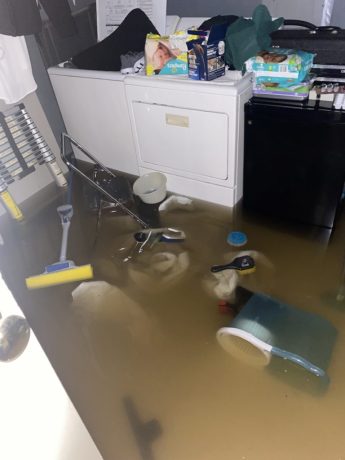Assemblywoman Gina Sillitti (D-Port Washington) announced that the state Assembly has proposed $50 million to be included in the state budget as a relief fund for victims of Hurricane Ida last year.
The September hurricane’s remnants damaged homes, drainage structures and other buildings throughout Queens and Long Island with harsh winds and rainfall, totaling roughly $50 million in needed repairs. Sillitti, in a Friday news conference, said the Assembly’s proposal is expected to be voted upon this week to be entered into the final round of budget discussion.
“Many property owners are still dealing with significant hardships six months after the hurricane hit New York,” Sillitti said in a statement. “Our neighbors need their government’s assistance and I am determined to make sure that they receive the resources they need to bounce back from this substantial hardship. This is the first step.”
Efforts to reach a state representative for comment on the tentative budget were unavailing.
Out of the 2,900 residential homes throughout New York that were impacted by Ida, a handful were flooded by rainfall upwards of nine inches in the Village of Great Neck.
During a September board meeting, village resident Wendy Teppel spoke on behalf of a group of residents residing on Chadwick, Plymouth and Warwick roads to advocate a study of the drainage system.
Teppel, who has served on executive boards at various schools throughout the area, said she has never seen destruction and flooding from a storm like Ida in more than 40 years of living in the village, with roughly two to three feet of water entering her two-story home.
While a smattering of areas throughout the peninsula were hit with flooding and damage to homes, those who live on Chadwick, Plymouth and Warwick have been experiencing inefficient drain systems for years, she said. Teppel said the main floors of her home and others’ homes were submerged, something that did not even occur during Superstorm Sandy.
Mayor Pedram Bral said the storm was the worst one he witnessed during his time in Great Neck.
As a result, the village’s Board of Trustees unanimously approved a feasibility study aimed at finding solutions to drainage issues that became prominent during the hurricane.
H2M Architects in Melville was retained by the village during a Jan. 18 board meeting. The $35,000 study will look at the flooding from the remnants of the hurricane last summer and how it impacted residential roads.
In its initial proposal to the village in November, H2M outlined potential solutions to prevent flooding on Chadwick, Plymouth and Warwick roads that included installing a stormwater pump station, re-routing portions of the drainage system, increasing pipe capacity or incorporating detention storage.
H2M said it conducted a study of the village’s drainage system in 2001, but that was focused on the infrastructure which discharges into a ditch between Piccadilly Road and Wooleys Lane, according to the proposal.
Residential homes were not the only ones impacted by Hurricane Ida, as Temple Tikvah in New Hyde Park had nearly $1 million in estimated damages from the storm. According to temple leaders, the furniture was damaged and schoolbooks were floating in the water, but the Torahs were in good condition. Flooding was caused by rising levels in nearby Herricks Pond that overflowed downhill onto Herricks Road.
The water damage was mostly in the lower part of the building and courtyard, the location of the religious school. Carpeting throughout the building, such as the common area and ballroom, and the wood paneling for most of the school have been removed as recovery efforts go on.
The temple received $335,000 in relief payments from the Federal Emergency Management Agency in January, according to a press release from the agency. FEMA officials said the temple, which serves parts of western Nassau County and eastern Queens, represents a “tight-knight community.”
“Funding plays a critical role for private nonprofits and houses of worship,” FEMA federal coordinating officer Lai Sun Yee said. “The need for additional funding to support cleanup and repairs after a disaster can be overwhelming for these groups in particular, as insurance may not cover some of these costs.”

